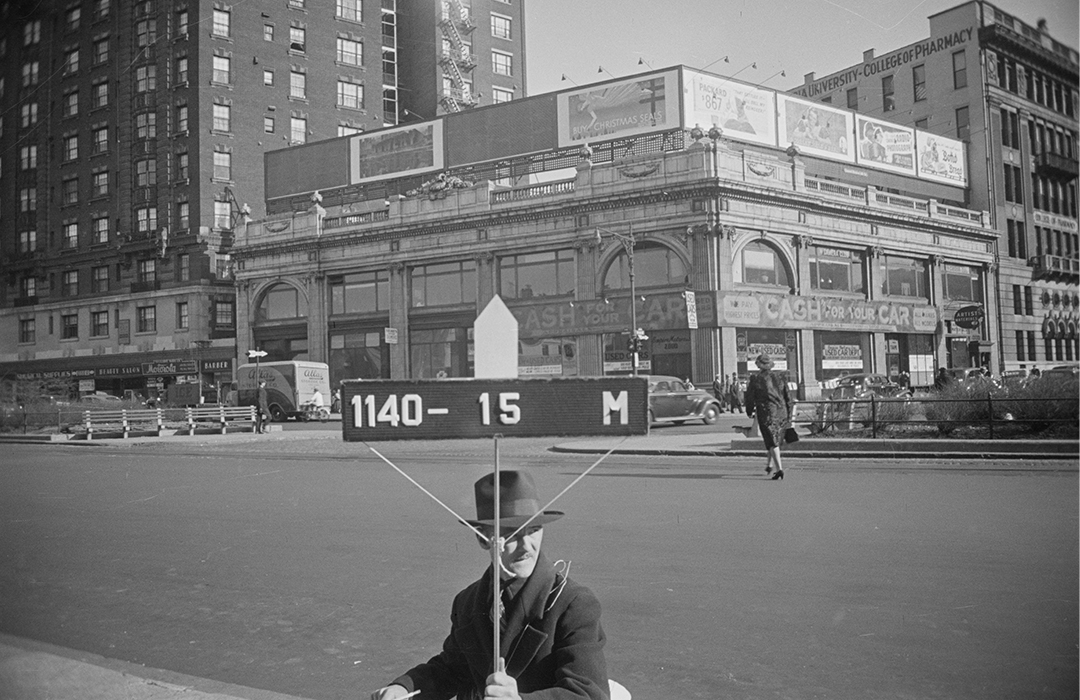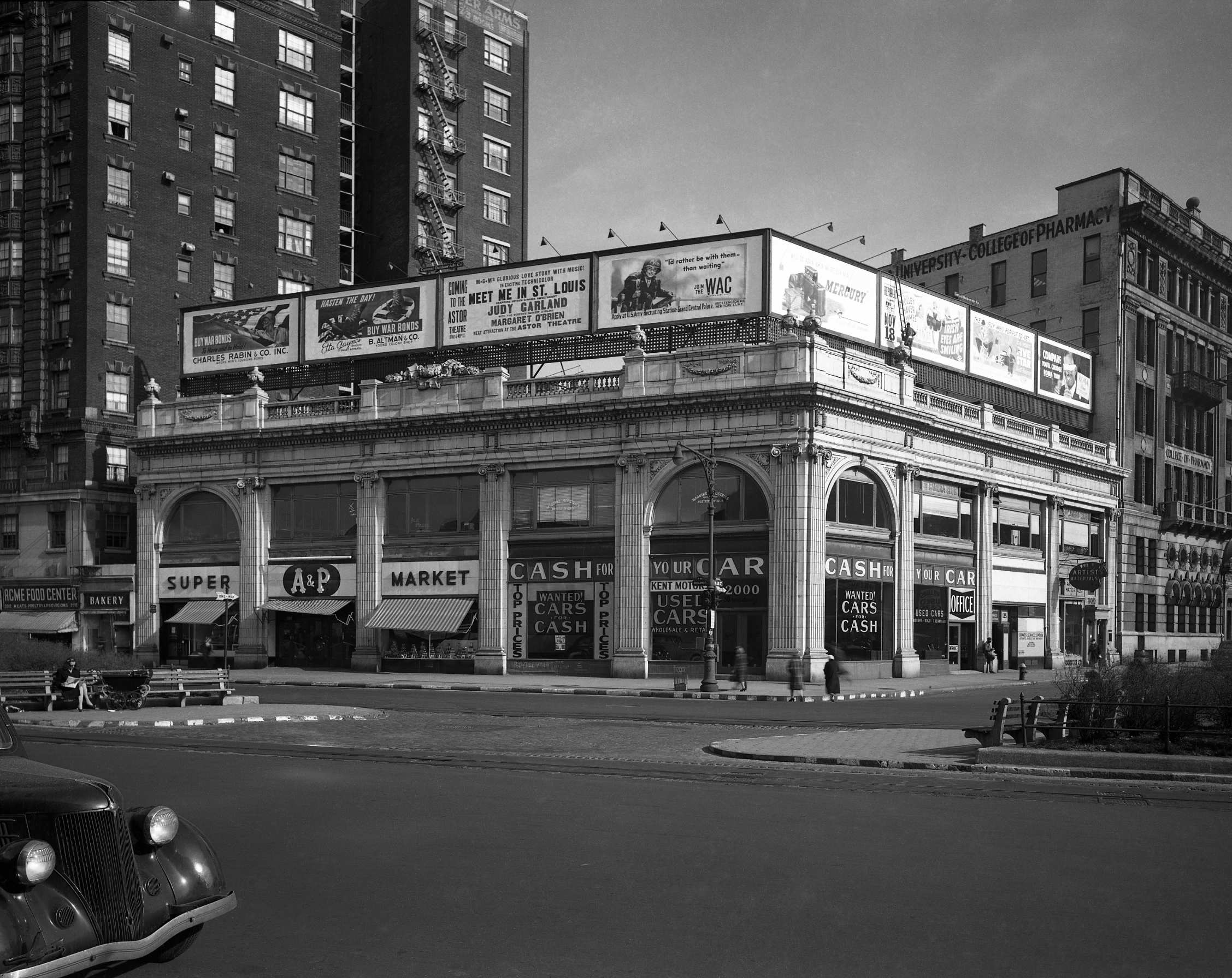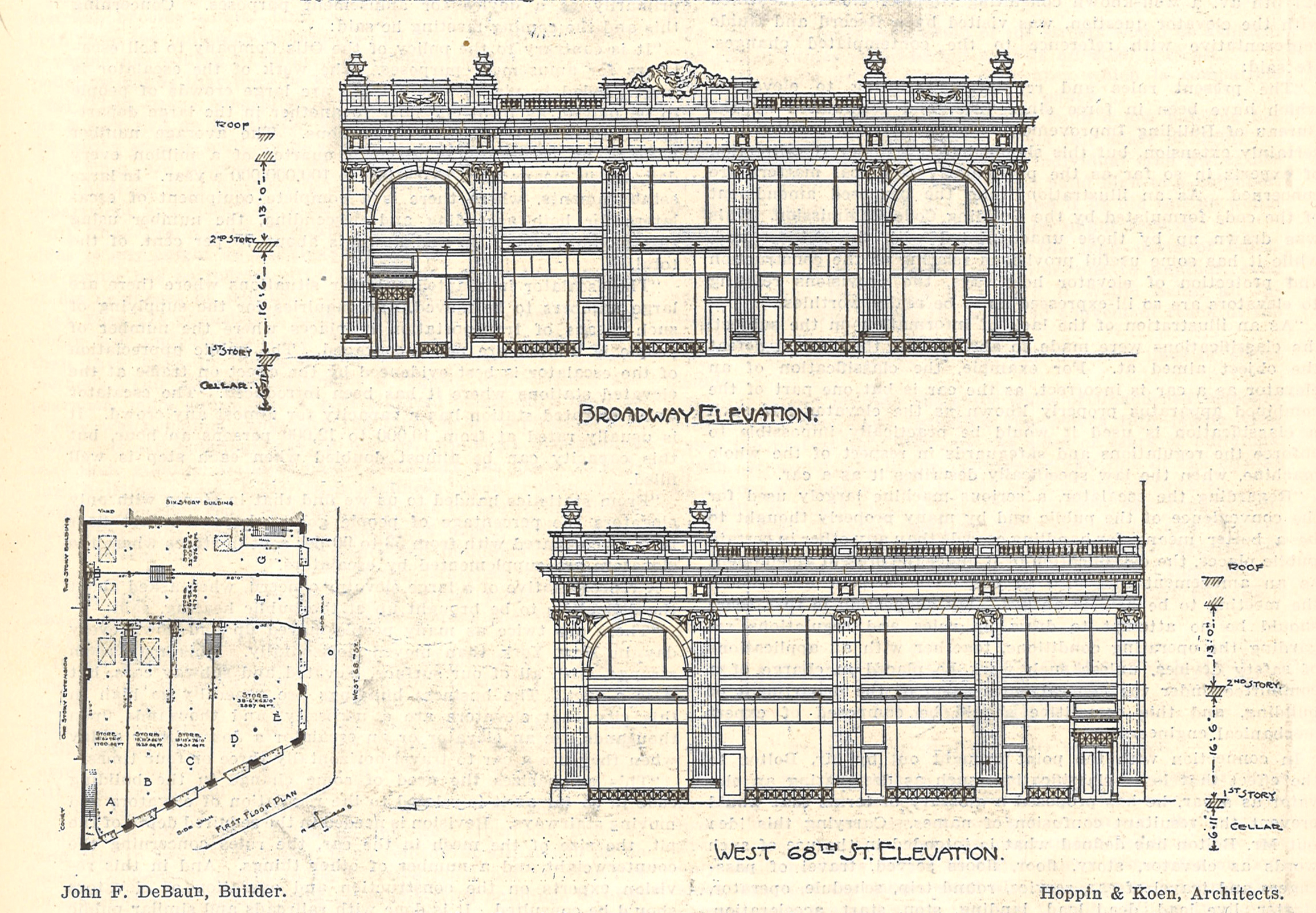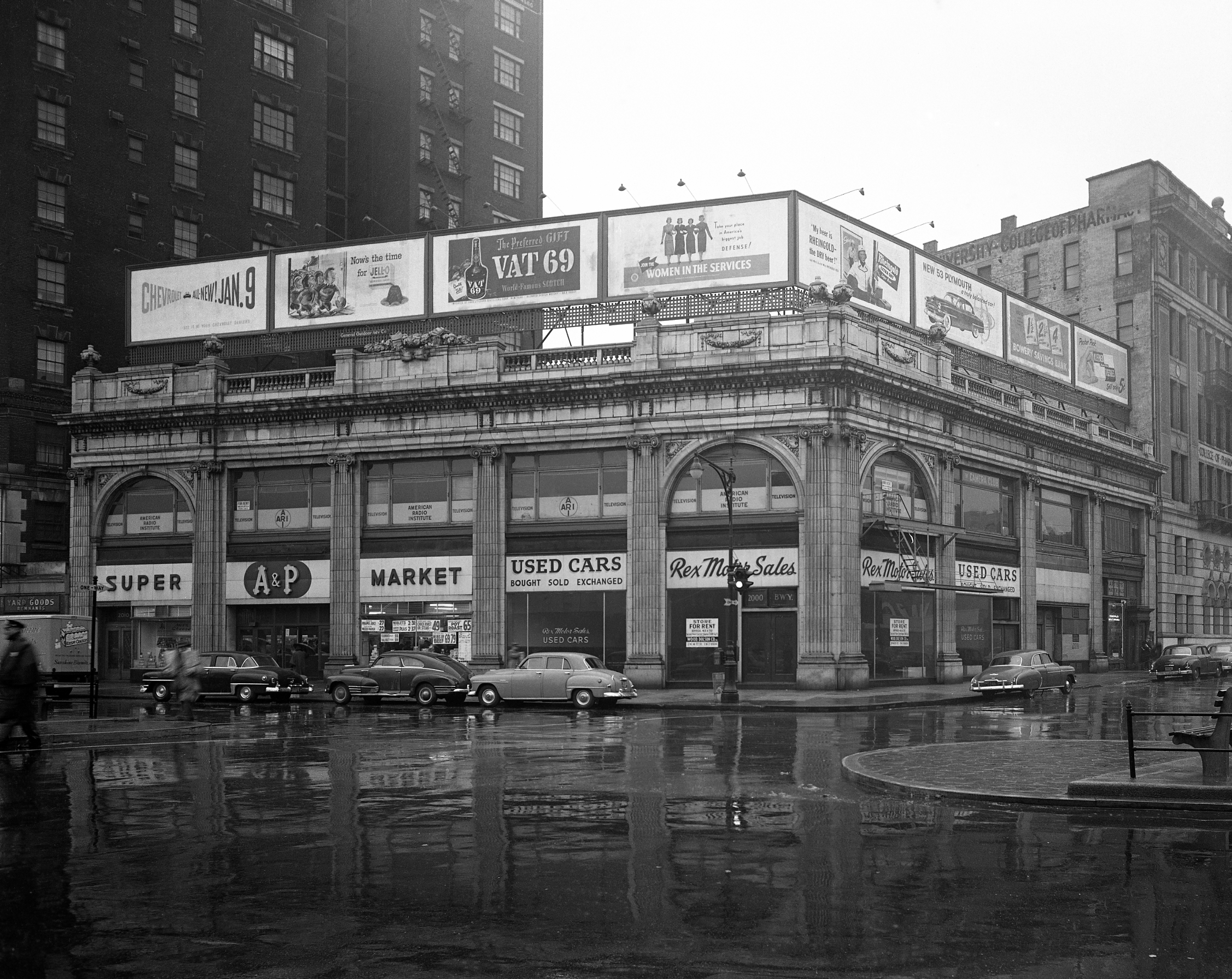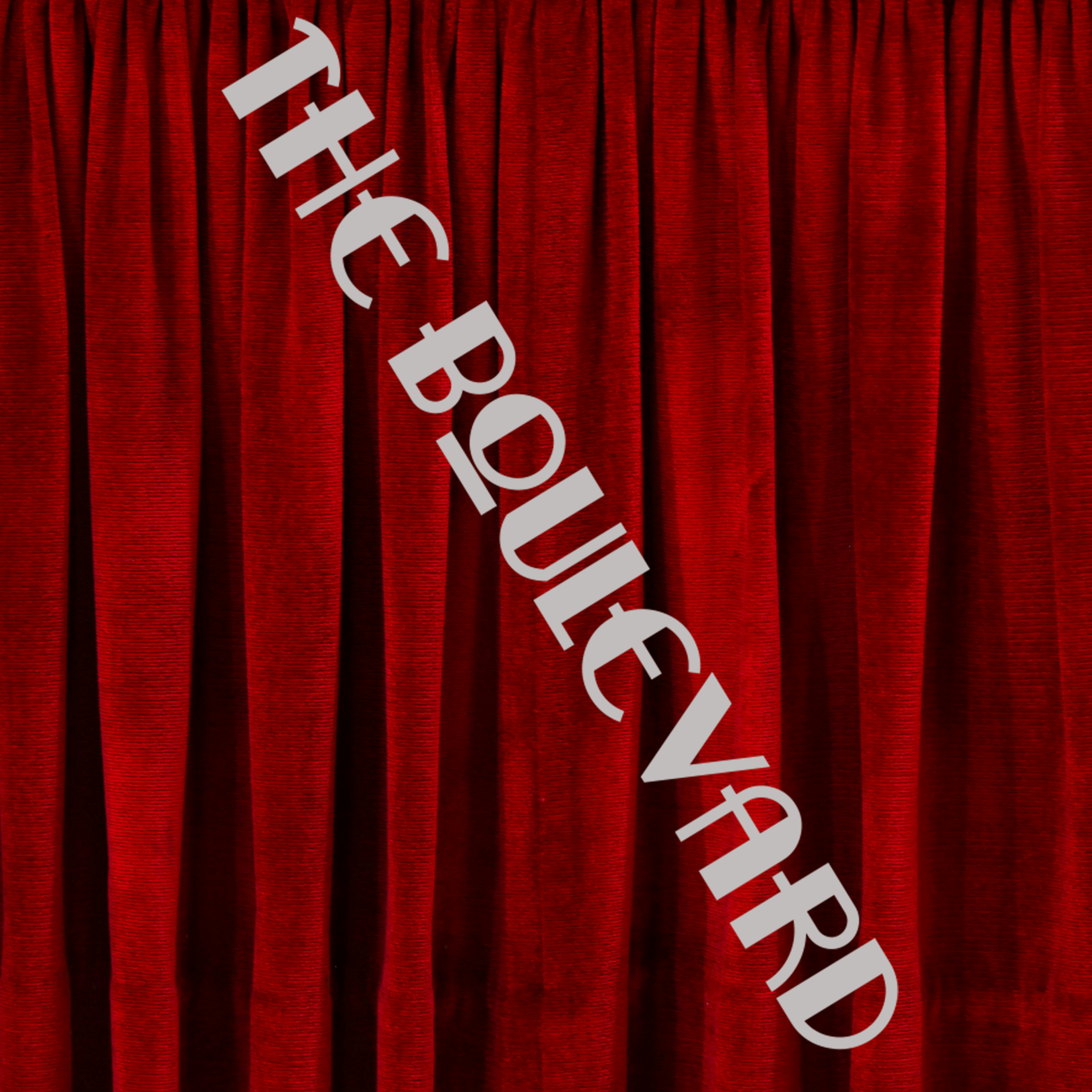
2000-2010 Broadway
by Tom Miller
The Rhinelander Real Estate Co. hired the architectural firm of Hoppin & Koen in 1907 to design a two-story commercial structure on the northeast corner of Broadway and 68th Street. Completed in March 1908, the Record & Guide singled it out for its handsome terra cotta façade. The article said, “The ordinary 2-story structure, or, as it is often called, a ‘taxpayer’ building…is generally an unsightly structure, and only built to obtain a certain revenue to defer the fixed charges on the property.” In this case, however, while the building was apparently constructed for that reason, “the owners have been sufficiently imbued with a desire to have a pleasing façade upon this building.” Two-story Scamozzi piers separated the vast windows, and above the cornice, an exuberant parapet was broken by sections of balustrades. It was decorated with festoons and ornate urns. The Record & Guide was non-committal regarding the style, calling it “Italian, or perhaps of late Louis XVI, or French Renaissance.”
Upper Broadway was known as Automobile Row, a fact reflected in the ground floor tenants. The Dow Tire Company moved into 2000 Broadway; the Empire Battery Co. signed a lease on 123 West 68th Street around the corner; and the Speedwell Car Company took the space at 2002 Broadway.
In 1913 the Cole-Stratton Company, the Waverley Co., and E. T. Scudder & Co., the Brown Car Corporation, and the Dimond-Warren Motor Company had automobile showrooms in the building.
The second floor contained offices and meeting rooms. Among the first tenants was The Camera Club. Established in 1896 by the consolidation of the Amateur Photographers of New York and the New York Camera Club, the quality of the photographs taken by its members was internationally recognized. In 1908, Club Women of New York said, “It has a well-equipped quarters in a central location, and its members enjoy facilities for the production of the best photographic work.” The article mentioned the club had a membership of “about 225, of which about fifteen are women.” A prominent member of the club was famed photographer Edward J. Steichen.
Rather surprisingly, the ground floor showrooms housed side-by-side, competing automobile firms for decades. In 1913 the Cole-Stratton Company, the Waverley Co., and E. T. Scudder & Co., the Brown Car Corporation, and the Dimond-Warren Motor Company had automobile showrooms in the building.
Buying an automobile from one of these vendors was an expensive undertaking. In 1912, a Cole-Statton advertisement assured, “Comfort is the distinguishing feature of the $4,000 or $5,000 car.” (That price would translate to $162,000 on the higher end in 2024.
An interesting tenant of an upper floor office in 1916 was the Egg Preservative Co. An advertisement in Poultry Success in June that year was titled, “Look Here Mr. Poultry Raiser – Keep Your Eggs for Winter Prices!” The firm’s “egg keeper” was guaranteed “to keep eggs fresh in any climate.” The ad promised, “Will keep fresh ten months. Look fresh too.”
Attorney Mary M. Lilly opened her campaign headquarters here in 1918. The Republican was running for State Assembly, and journalist Eleanor Booth Simmons visited the office a month before the election. On October 27, she described it in The Sun as, “a pleasant room with the biggest American flag I ever saw on the wall flanked by the picture of her soldier son.” Simmons was realistic in Mary Lilly’s chance for election just one year after New York women got the right to vote. “Mrs. Lilly has a son in the service and will tolerate no nonsense about the war, wherefore, and also because she is a suffragist and a good, solid, sensible woman, I regretted that she had no chance.”
In the summer of 1919, the walls of The Camera Club were lined with about 50 photographs of the Joan of Arc Statue in Riverside Park. The Joan of Art Statue Committee had launched a contest “for the best photographs” of the statue. A panel of judges (interestingly, none of whom was a photographer) was chosen by The Camera Club. The American Scenic and Historic Preservation Society Report noted they were “the painter, Mr. Harry W. Watrous; the sculptor, Mr. Robert I. Aitkin, and the painter, Mr. Francis C. Jones, all having world-wide reputations in their branches of art.” The first-place winner, Edward Hagaman Hall, won $30.
In March 1922, an advertisement in The New York Times offered “Beautiful Offices, Ideal Location for Professional Purposes or 2nd Floor Stores.” It appears the ad was answered by newly-organized The Jewish Forum magazine, which moved in shortly after. A decade later, the periodical would become a force, keeping American readers informed of what was happening in Germany. It urged them to send issues abroad. On September 17, 1933, for instance, an article said in part, “As Mr. Hitler’s administration is destroying Jewish books and periodicals, loyal Jews will help enlarge the influence of The Jewish Forum and add to its strength by additional subscriptions, as an offset to that vicious program of destruction.”
“Mrs. Lilly has a son in the service and will tolerate no nonsense about the war, wherefore, and also because she is a suffragist and a good, solid, sensible woman, I regretted that she had no chance.”
As mid-century neared, few remnants of Automobile Row remained. In 1943, an interesting tenant of 2000-2010 Broadway was the Thompson Aircraft & Engineering Co. But by the last quarter of the century, the days of motorcars and airplanes were gone. The entire ground floor was a grocery store.
At 7:30 on the morning of July 14, 1973, a man entered the A. & P. store while a delivery was being made. Told that the store would not be open until 8:00, he left. But, according to The New York Times, “Seconds later, the man returned with an accomplice, drew a gun, forced eight employees to the rear of the store, and ordered a woman clerk to open the safe.” They escaped with $4,000 in a car driven by a woman.
The trio’s spree had only begun. At 8:10, the two men walked into an A. & P. in the Bronx and made off with $2,000. Twenty minutes later, they hit a White Plains A. & P., this time netting $3,600. Their luck ended there. They were soon captured after a high-speed chase, during which one of the holdup men received two bullet wounds.
Hoppin & Koen’s handsome terra cotta building, which impressed the Record & Guide in 1908, was demolished in 1986 to make way for the 16-story residential building, The Copley.
Tom Miller is a social historian and blogger at daytoninmanhattan.blogspot.com
BUILDING DATABASE
Keep Exploring
Be a part of history!
Think Local First to support the business at 2000-2010 Broadway:
Meet Francisco Diaz!

